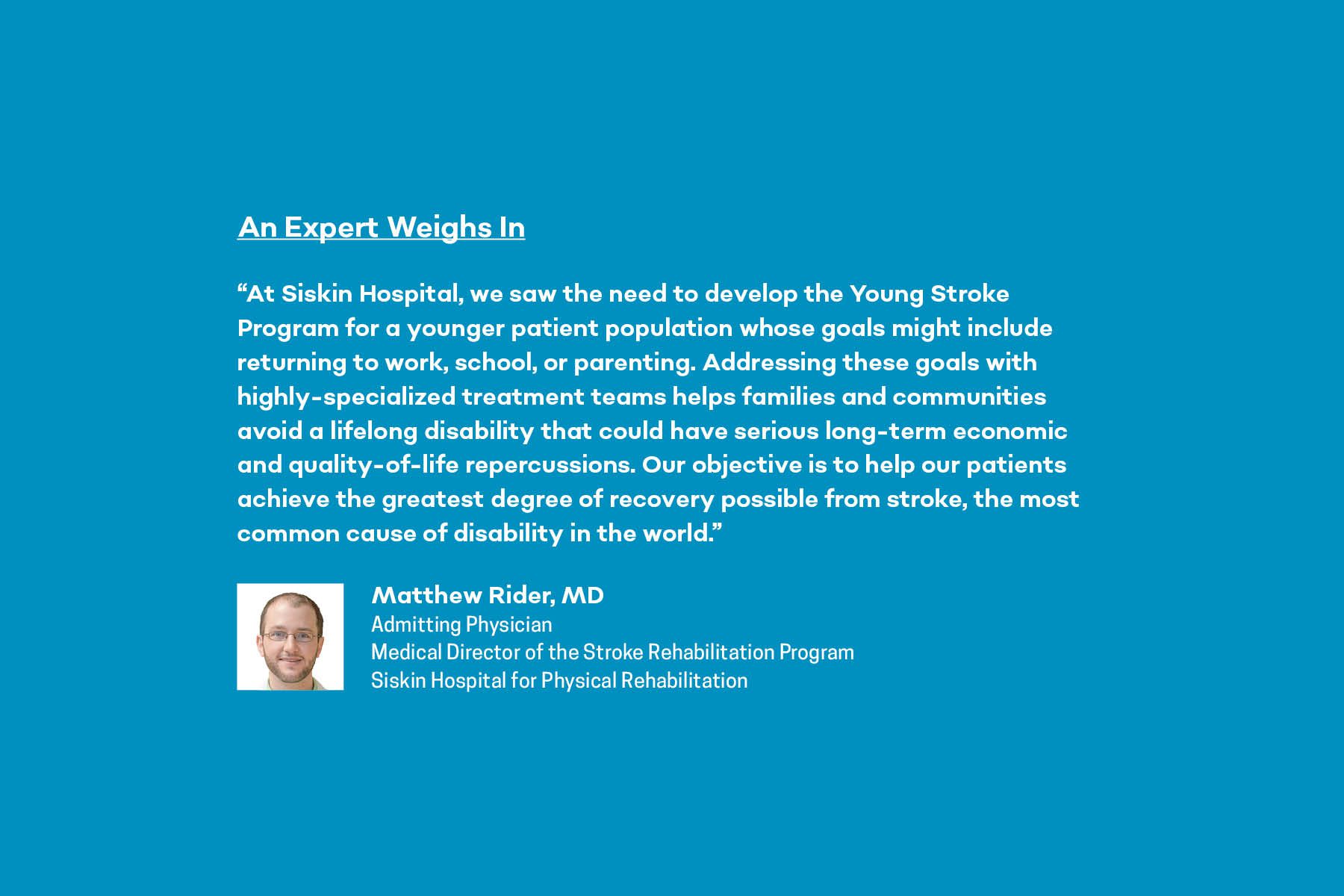Annual Advancements in Medicine Section
From 3D-printing technology in dentistry, to robotic arm assistance in orthopedic surgeries, to anesthetic advances and beyond, new research in the medical field makes for easier procedures for patients and doctors alike. These Chattanooga-based medical professionals share the latest in revolutionary treatment options.
By Lindsey June
Treatment options are now available that better reflect the unique recovery needs of younger stroke patients.
Understanding Stroke in Younger Adults
When someone mentions a stroke, it’s easy to picture it occurring in an older adult due to age being a well-known risk factor. This isn’t too far off the mark, as each decade after 55 increases your risk of stroke – a risk factor that isn’t modifiable. However, strokes can and do occur in younger adults; in fact, while the rate of stroke overall is decreasing, it’s actually on the rise in young and middle-aged adults. While some causes of stroke in these age groups are out of a person’s control, such as cardiovascular birth defects and clotting disorders, other risk factors, such as hypertension, diabetes, smoking, and obesity, can be addressed and mitigated with the help of healthcare providers and a good support system.
New Solutions
One of the greatest differences between stroke in younger adults versus stroke in older adults is the focus of rehabilitation and recovery. Though the road to recovery can be long and challenging for anyone who experiences a stroke – a research study published in 2019 estimated that over 40% of stroke victims under age 65 will not be able to return to work – the good news is that younger age can increase your rate of recovery, as younger brains retain greater ability to adjust and learn new skills.
As the rate of stroke in younger populations is on the rise, many rehabilitation centers have crafted recovery programs to accommodate their needs. For example, the path for recovery for a younger adult who has suffered a stroke may begin with inpatient rehabilitation, which might include respiratory, physical, occupational, and speech therapies, as well as the services of rehabilitation physicians, psychologists, and registered dietitians. Following this, a young stroke patient can progress to outpatient rehabilitation services, which allow them to return home while maintaining a recovery regime that still includes the therapies mentioned above. For continuing recovery, many rehabilitation centers have wellness programs available that focus not only on recovery, but also on stroke prevention.
Benefits to Patients
Stroke recovery programs designed specifically for younger patients are important when it comes to optimizing care and rehabilitation that meet their unique needs. Not only do these age group-specific programs prioritize both the physical and mental health of the patient, but they also offer guidance and assistance to combat their modifiable risk factors, thus working toward the prevention of multiple strokes.


